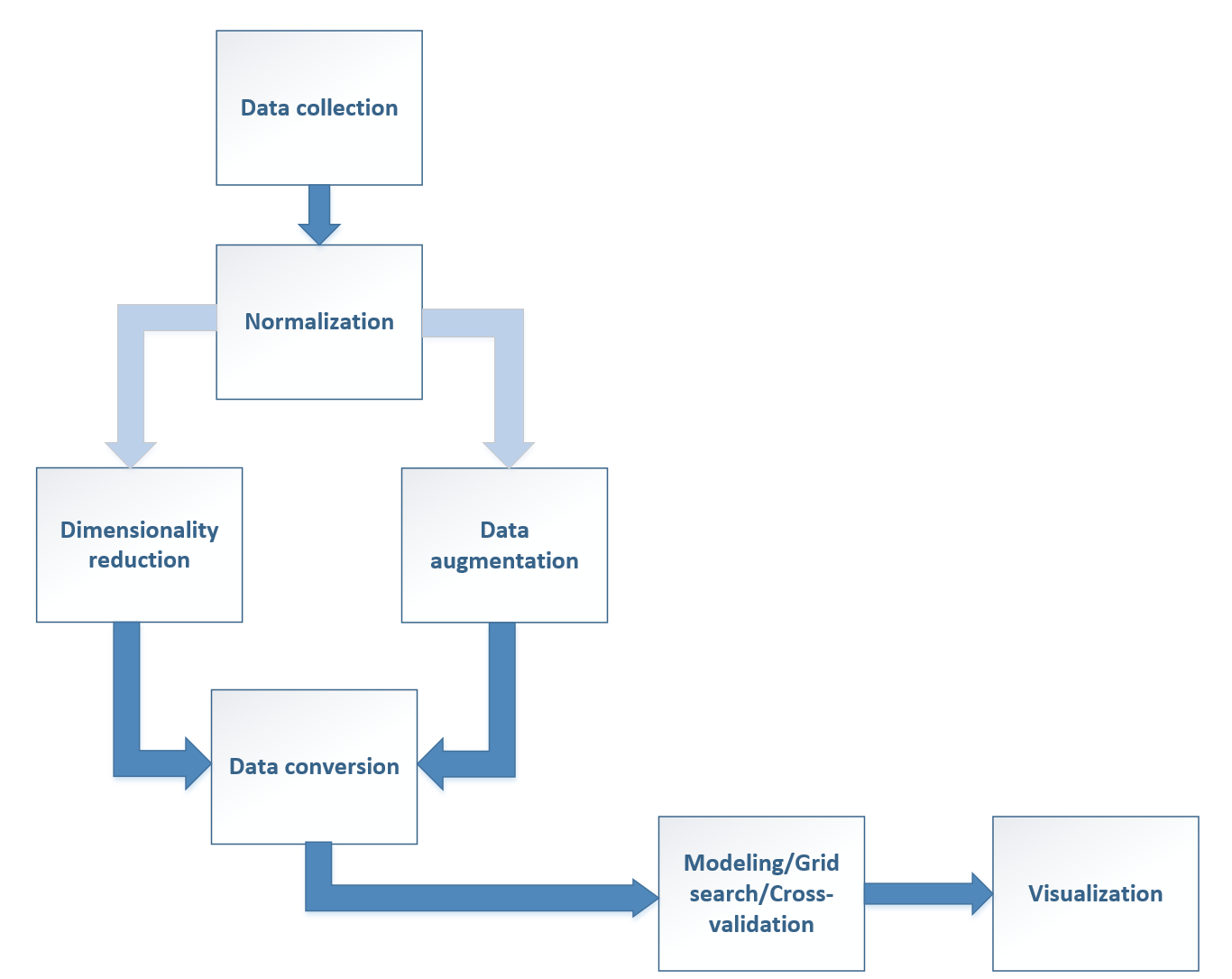Until now we have discussed single methods that could be employed to solve specific problems. However, in real contexts, it's very unlikely to have well-defined datasets that can be immediately fed into a standard classifier or clustering algorithm. A machine learning engineer often has to design a full architecture that a non-expert could consider like a black-box where the raw data enters and the outcomes are automatically produced. All the steps necessary to achieve the final goal must be correctly organized and seamlessly joined together in a processing chain similar to a computational graph (indeed, it's very often a direct acyclic graph). Unfortunately, this is a non-standard process, as every real-life problem has its own peculiarities. However, there are some common steps which are normally included in almost any ML pipeline.
In the following picture, there's a schematic representation of this process:

Now we will briefly explain the details of each phase...



